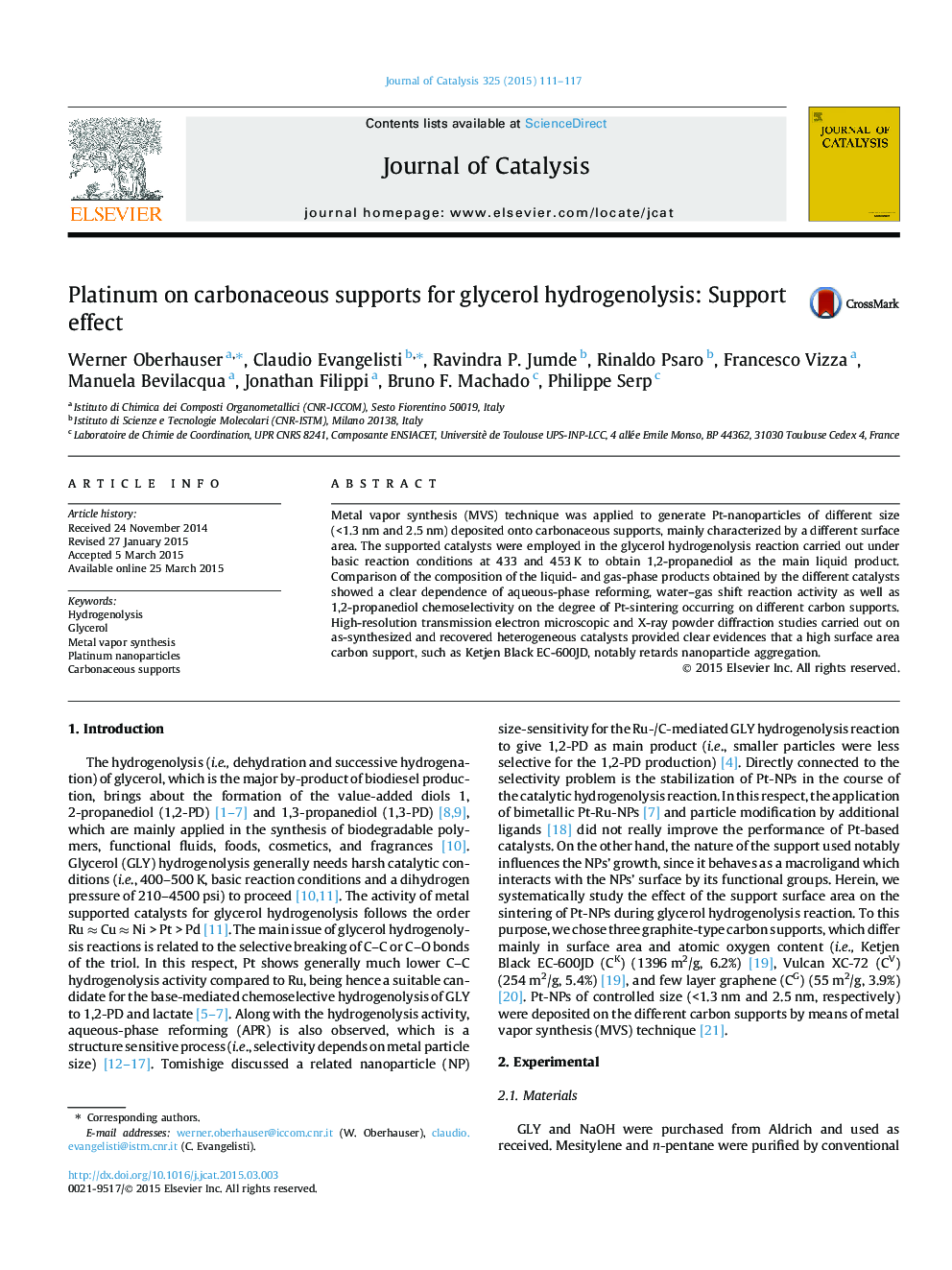| Article ID | Journal | Published Year | Pages | File Type |
|---|---|---|---|---|
| 60894 | Journal of Catalysis | 2015 | 7 Pages |
•Different sized Pt-nanoparticles were supported onto carbonaceous materials by metal vapor synthesis technique.•Nanoparticles’ growth during glycerol hydrogenolysis was steered by the support surface area.•Reaction temperature, nanoparticles’ size, and carbon surface area influenced the chemoselectivity of hydrogenolysis products.
Metal vapor synthesis (MVS) technique was applied to generate Pt-nanoparticles of different size (<1.3 nm and 2.5 nm) deposited onto carbonaceous supports, mainly characterized by a different surface area. The supported catalysts were employed in the glycerol hydrogenolysis reaction carried out under basic reaction conditions at 433 and 453 K to obtain 1,2-propanediol as the main liquid product. Comparison of the composition of the liquid- and gas-phase products obtained by the different catalysts showed a clear dependence of aqueous-phase reforming, water–gas shift reaction activity as well as 1,2-propanediol chemoselectivity on the degree of Pt-sintering occurring on different carbon supports. High-resolution transmission electron microscopic and X-ray powder diffraction studies carried out on as-synthesized and recovered heterogeneous catalysts provided clear evidences that a high surface area carbon support, such as Ketjen Black EC-600JD, notably retards nanoparticle aggregation.
Graphical abstractFigure optionsDownload full-size imageDownload high-quality image (134 K)Download as PowerPoint slide
